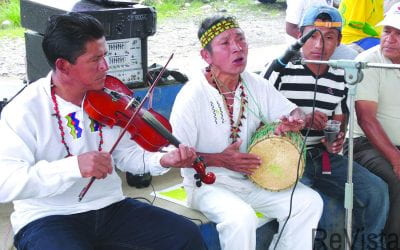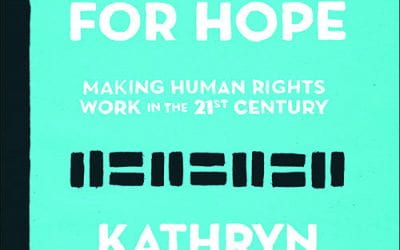One Day We Arrived in Japan
In 2003, when I was an undergraduate at Harvard, I started studying the fascinating history of Japanese migration to Brazil and the more recent Brazilian migration to Japan. Brazil has the largest population of Japanese descendants (outside Japan) in the world. In 1990, the Japanese government passed a law allowing second- and third-generation Japanese descendants (the children and grandchildren of Japanese citizens) and their families to live in Japan and work there. For many Brazilians of Japanese descent, this was an attractive option, as they could earn higher salaries by going to Japan and working in factories. During the past 28 years, hundreds of thousands of Brazilians of Japanese descent and their families have gone to Japan in search of higher salaries and a better life.
The migration is overwhelmingly for economic reasons: although most of the migrants have Japanese heritage, my surveys and interviews have shown that they go to Japan in search of financial stability and a better life, not due to cultural ties or a desire for some mythical “return” to their ethnic homeland. When they arrive, most of the migrants do not speak much Japanese or identify with Japanese culture and society; that fact, along with the physical and mental toll of exhausting factory work, is a major reason why many Brazilians have such a challenging experience in Japan.
I received grants and fellowships to do several years of field research in each country, and I wrote articles and theses that I presented at academic conferences. But in the process, I realized that while my sociological research was good for identifying trends and making generalizations based on surveys and interviews, it wasn’t really showing the lives of individual migrants and families. In 2006, I was in São Paulo finishing a year of research and was about to go to Japan for 18 months of research there. It occurred to me that, just as I was about to move from Brazil to Japan, thousands of Brazilian families were about to make the trip. I wanted to meet them, show their faces, and give them the opportunity to tell their stories—not just through interviews, but by following their journeys across the world for several years and letting them share their own lives and experiences. So, I bought video and audio equipment and, together with co-director Ana Paula Hirano, set out to find Brazilians who were about to go to Japan. That’s how the documentary One Day We Arrived in Japan was born. At the time, we imagined that we would see some major changes in the lives of the participants, but we didn’t foresee that this film would be a decade-long journey and that we would witness in great intimacy such dramatic and unexpected turns of fate.
The great challenge of this film was that instead of just going to Japan and interviewing Brazilians there, or providing information and statistics, we wanted to follow people’s entire immigration experience from the beginning. We wanted to do something with the film that no journalistic report could do: closely follow people’s lives for many years, showing how their hopes and expectations withstand a challenging new reality and unexpected outcomes. That’s why the film took over a decade to make. Ana Paula and I imagined that the experience of moving to a very different country on the other side of the world would be transformative for everyone, and we wanted to capture that—but we didn’t know how it would affect each family. We needed to allow a lot of time for life to take its course. We are deeply grateful to the protagonists of the documentary for entrusting us with their stories.
To find the participants, we went to places in São Paulo where we knew people would go if they were preparing to move to Japan: employment agencies, Japanese language classes, and NGOs that host workshops about working in Japan. We interviewed dozens of families; some of them decided not to migrate, or didn’t get their Japanese visas, or decided to quit the documentary—and we ended up following five families in Japan for the first two years. Three of those families made it into the final film: a mother and daughter, a young couple, and a family of four with a small child named Bruno. The families struggled to adapt to life in Japan, as 5-year-old Bruno grew up and became a teenager.

Bruno, age 8, in Okazaki, Japan: “When I started first grade at the Japanese school, I cried, because I didn’t understand what anyone was saying. It made me want to return to Brazil. I stood there thinking, ‘What are they doing? What are they saying?’ Then I thought, ‘I’ll stop doing what I want, and I’ll imitate them.’ And I was able to interact with them a little bit. Now I’m in second grade, trying hard to become a third grader. I understand everything now – I can talk with my teacher and with my friends.”
We wanted the film to focus on the migrant families and their stories directly and transparently. For this reason, there is no voiceover narration or added music or sound effects, and there are also no “talking heads”—everyone who appears in the film has a direct connection to one of the three families. We don’t pretend that the camera isn’t there or that every scene is somehow “pure” or natural; to the contrary, I believe that the filmmaker can and should be a bit disruptive sometimes, creating situations and opportunities for truth to surface. At the same time, I guess I do appreciate a sort of simplicity and purity in documentaries: I believe that a powerful scene or interview conveys its own emotions and insights, without pseudo-poetic voice-overs or tear-jerking cello tracks. Essentially, we wanted to give the migrant families a series of occasions to share their lives and tell their own stories, without external material. We did that by recording verité footage, and by creating opportunities for reflection, such as by showing the families past interviews and footage of themselves.
The crew was just me and Ana Paula. This allowed us to become very close to the families in the film, which I think was fundamental to sharing their stories. We did some of the most powerful interviews at their houses at two in the morning. I think that this intimacy is one of the defining characteristics of the film. We also collected and incorporated their home videos, and we used a variety of cameras and aspect ratios for our own footage, so as to differentiate between past and present and to form layers of memory.
One Day We Arrived in Japan is the result of what turned out to be a massive editing project—shaping more than 200 hours of footage of three families, in two countries, over ten years, into a compelling 80-minute film with a coherent and engaging narrative structure. Ana Paula and I did a lot of preliminary editing over the years, but after filming was finally complete in 2015, four excellent filmmakers joined the team and made wonderful creative contributions. First, Marlom Meirelles—a very talented filmmaker from Pernambuco—became the film’s creative consultant and co-editor, and together we reviewed all of the footage and edited multiple versions over the course of ten months. After that, we collaborated for two months with co-editor Luelane Corrêa (who edited many of the films of legendary director Nelson Pereira dos Santos), revising the film and adjusting scenes and transitions frame by frame. Then, during two intense weeks as editing consultant and finishing editor, Felipe Lacerda (co-director of Bus 174, and editor of the Brazilian classic Central Station) helped us to develop a more compelling narrative structure and improve the film on every level. Finally, Ricardo Cutz did the sound editing and sound mix, and the team at O2 Pós in Rio de Janeiro did the image post-production. So, what started as a two-person project became a massive team effort. And hundreds of people from around the world provided support and advice, for which we are extremely grateful. It has been quite a saga.
One Day We Arrived in Japan had its world premiere in May 2018 at the Latin American Studies Association Film Festival in Barcelona. It is now available for online viewing; see onedaywearrivedinjapan.com for details.
The directors express their sincere thanks to Jorge Paulo Lemann, whose generous financial support allowed them to complete the editing and post-production of the film. The David Rockefeller Center for Latin American Studies provided the initial grant 15 years ago for Litvin’s research on Brazil-Japan migration, and this year DRCLAS funded the directors’ travel to Barcelona for the premiere of One Day We Arrived in Japan.
Fall 2018, Volume XVIII, Number 1
Aaron Litvin spent 30 months in Brazil and 30 months in Japan during pre-production and production of One Day We Arrived in Japan. Litvin graduated from Harvard College with a degree in Latin American Studies, earned an M.S. in Sociology from the University of São Paulo, and is a Ph.D. candidate in Luso-Brazilian literature and Critical Media Practice at Harvard University. He was a Fulbright Scholar in Brazil and a Japanese Government Research Scholar at Sophia University in Tokyo. His e-mail address is litvin@fas.harvard.edu
Related Articles
From Vendedor to Fashion Designer
English + Español
Korean immigrants in Latin America are shaping and developing fashion economies there. Upon arrival, Korean immigrants to Argentina and Brazil may have been lonely, isolated and confused…
Shared Sentiments Inspire New Cultural Centers
English + Español
In the early afternoon of January 3, 2018, in the mountainous village of Shicang, Zhejiang Province, China, firecrackers burst into the air and flags waved in the wind as a parade of Clan…
Evidence for Hope: Making Human Rights Work in the 21st Century
A Review of Evidence for Hope: Making Human Rights Work in the 21st Century Contemporary Human Rights and Latin America On September 5, 1921, Roscoe “Fatty” Arbuckle, Hollywood’s then best-paid star, attended a party in San Francisco’s St. Francis Hotel, drank...






